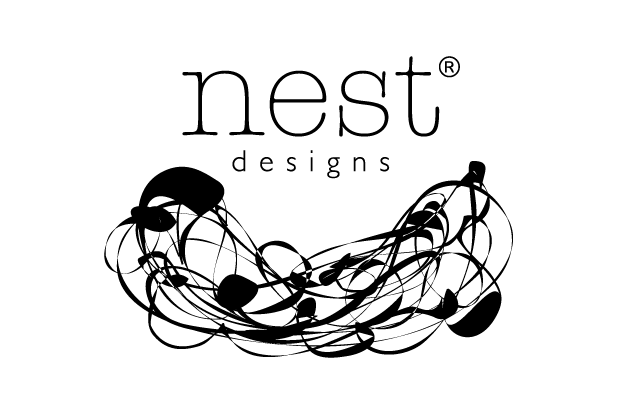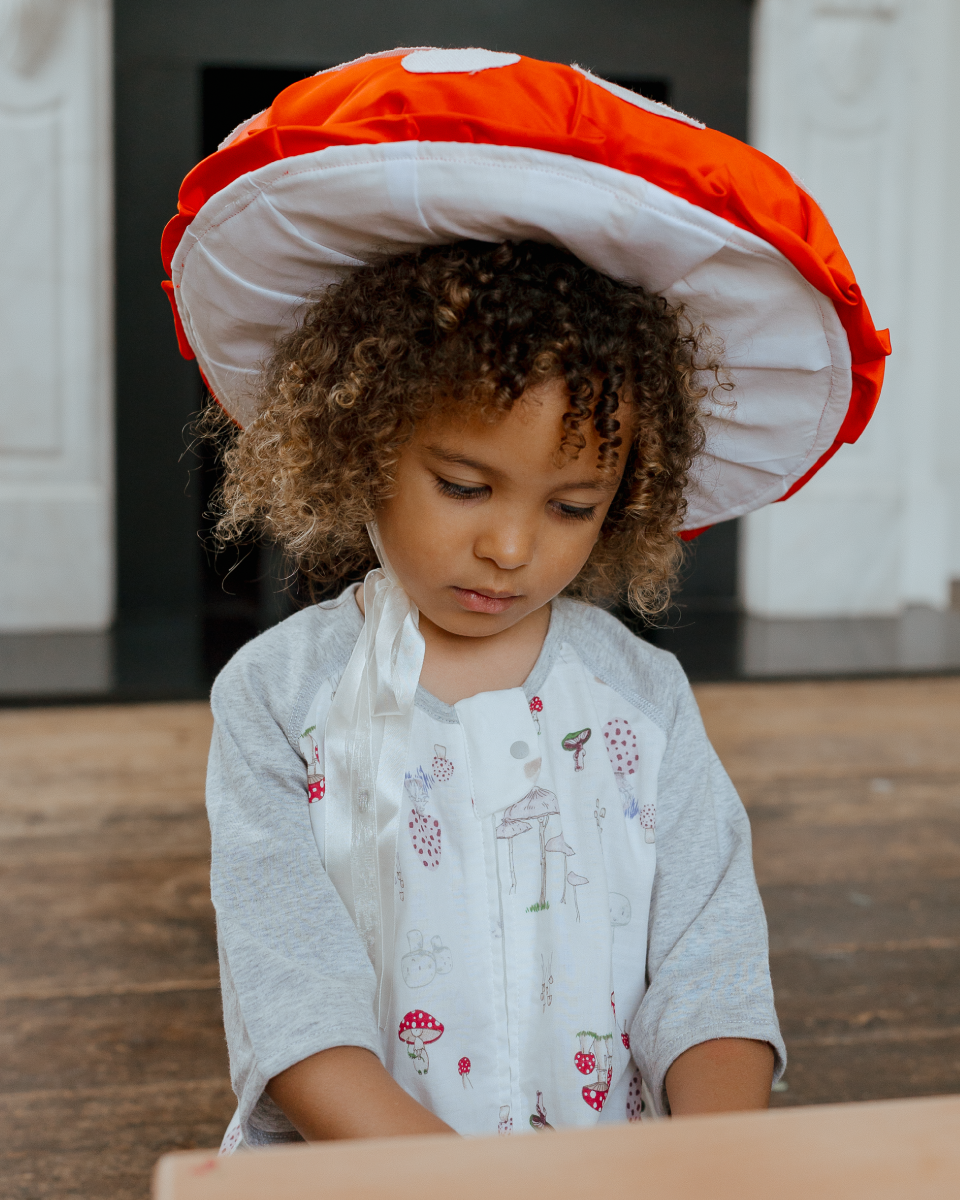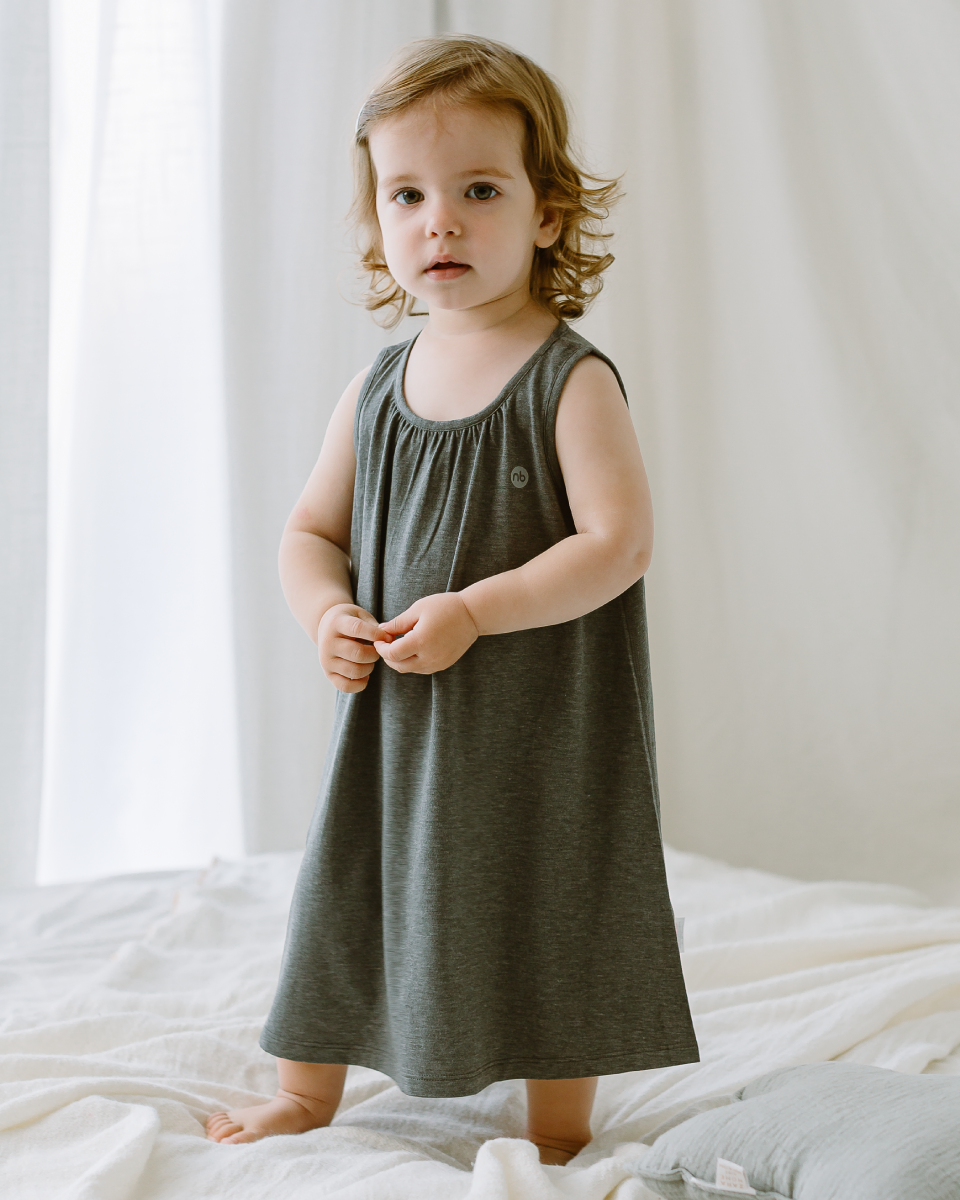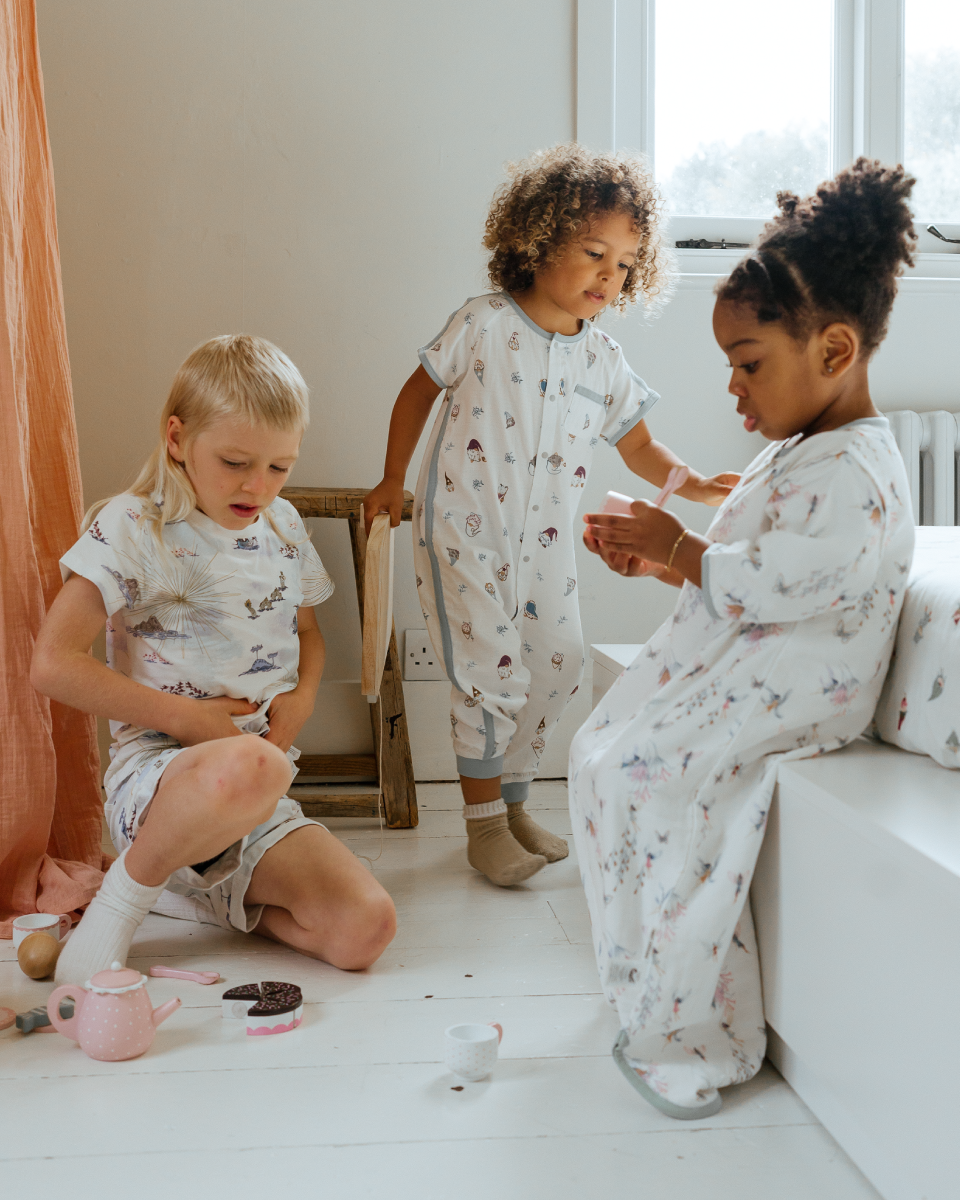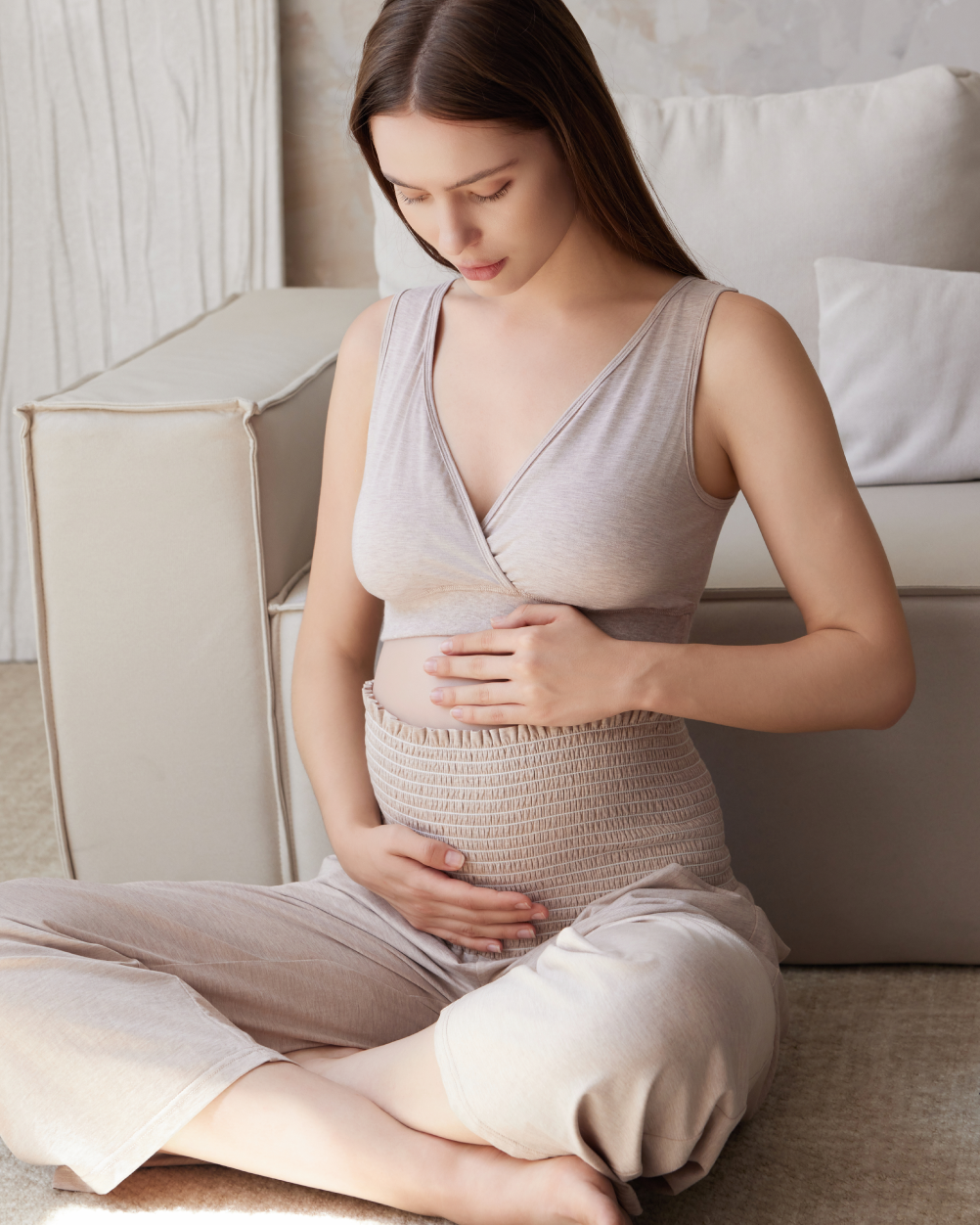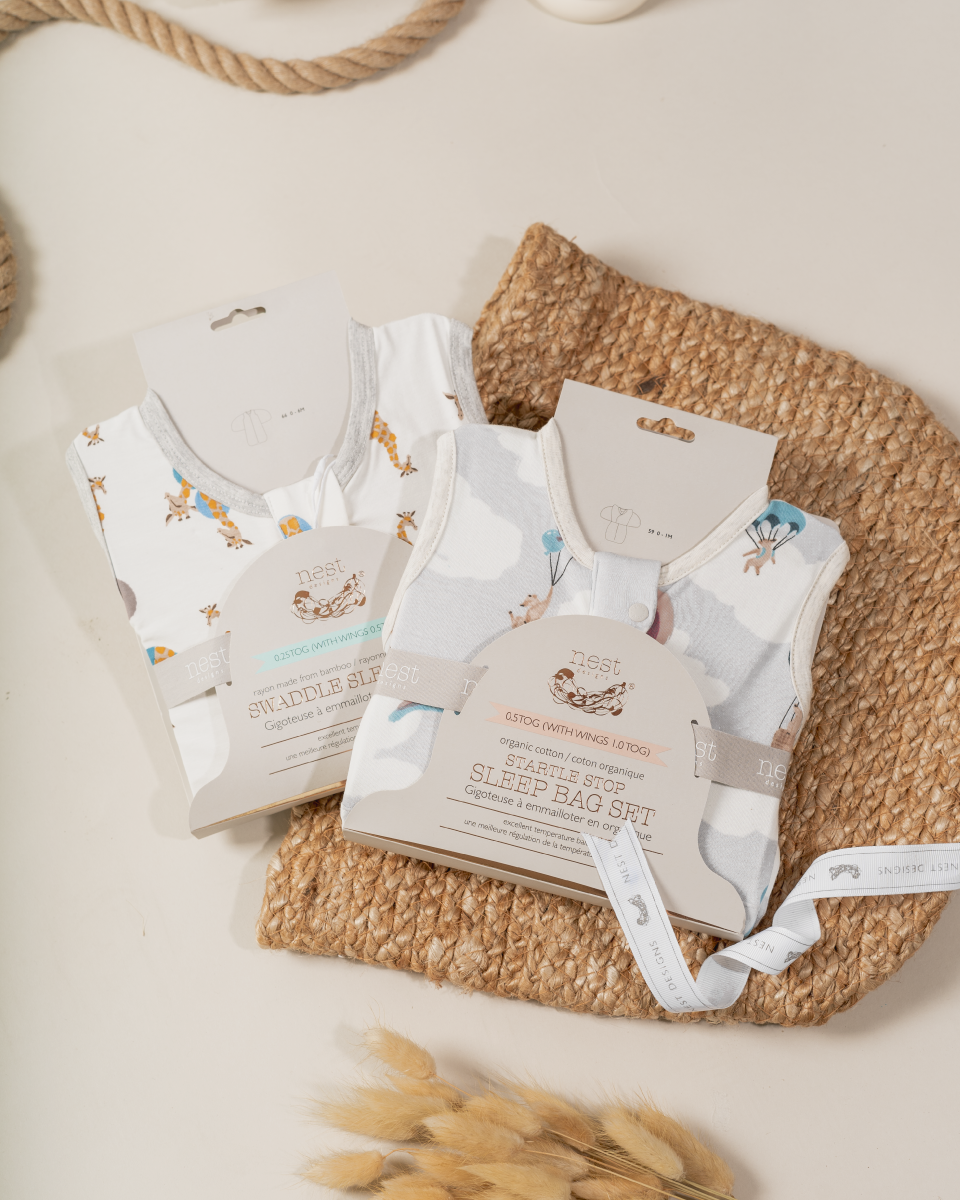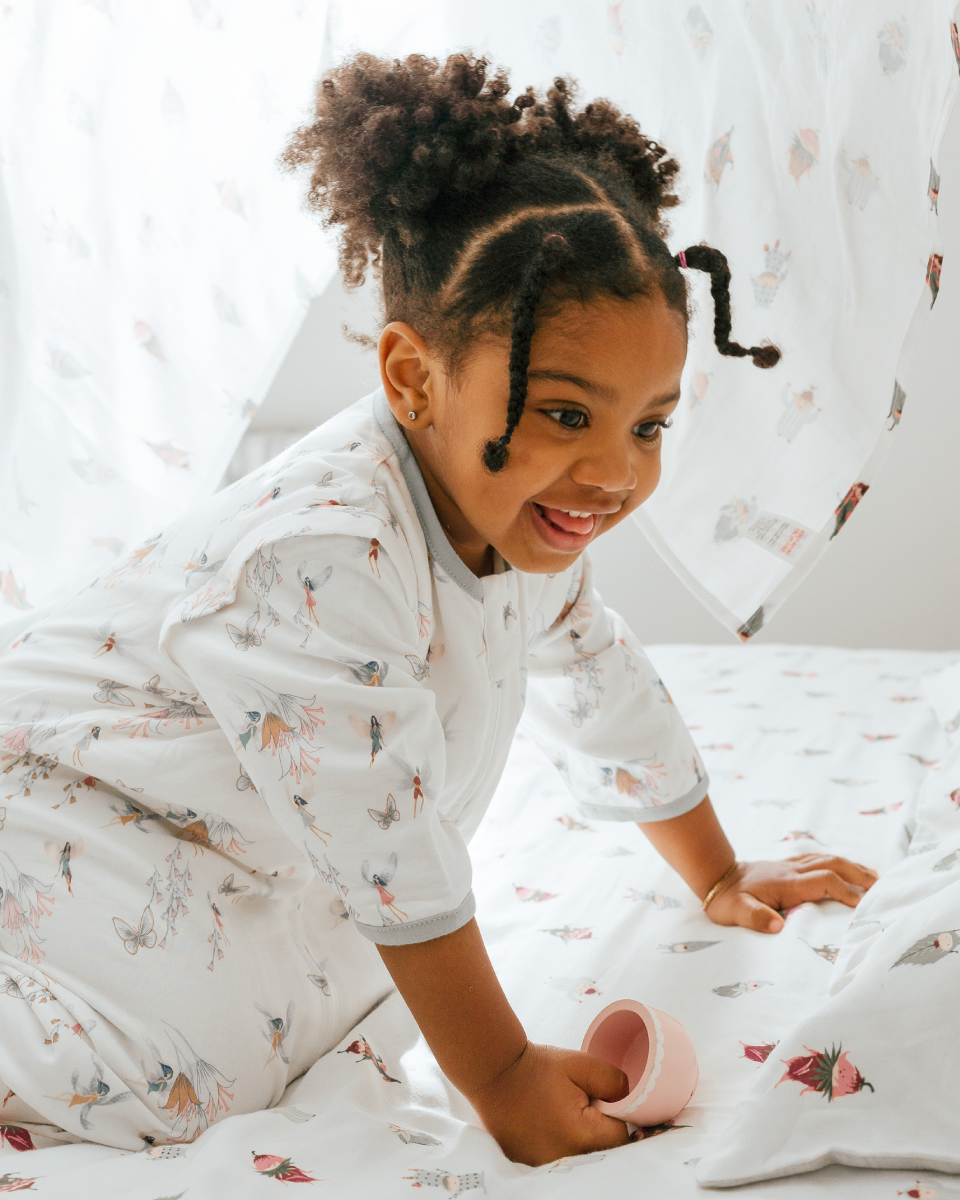
The best bibs for your baby can help you keep them clean and dry for longer (bibs for drool are an absolute lifesaver!). With so many baby bibs on the market, choosing the style that's right for your little love can feel overwhelming. Here are the essentials to consider when selecting the best baby bib for your child's needs.
What are the 5 types of baby bibs?
In general, there are five styles of baby bibs, each designed for a particular use:
- Bibs for drool: As the name suggests, these baby bibs are for the drool phase. Some babies naturally drool a lot, and others may start drooling more as their teeth grow in. Drool bibs usually use lightweight, absorbent fabric—ideally made of an oh-so-soft material, like bamboo or organic cotton, that’s gentle on delicate baby skin.
- Bibs for feeding: When your little bubs transitions from bottle feeding or nursing to purees, an easy-to-clean feeding bib protects their sweet ensembles from mashed yams or avocado. These bibs often have adjustable closures and can be made from fabrics or waterproof synthetics.
- Bandana bibs: Stylish fabric bandana bibs serve the dual purpose of keeping your baby dry while making their ensemble even more adorable. These bibs have a distinct triangle shape made for fashion and function. They are often smaller than regular bibs but provide enough neck and chest coverage to keep babies clean and dry.
- Smock bibs: These full-coverage bibs resemble artist smocks. They are perfect when your little charmer is learning to feed themselves, experimenting with paint, or enjoying other messy activities.

- Silicone bibs: Made from durable silicone, these bibs are easy to wipe clean after each use. The best silicone bibs for babies are crafted from food-grade, non-toxic silicone.
Do newborns need bibs?
Generally, the newborn phase is the age of a baby who is less than three months. Newborns do not need bibs, but they can start wearing them if it makes things easier for their parents. Bibs can help manage drool, spit-up, and keep your little one dry and comfortable in these early days.
Are silicone bibs better than cloth bibs?
Whether a silicone or cloth bib is better depends on your specific needs and preferences. The features of each help determine if a silicone or cloth bib is best for your little love.
Silicone bibs are:
- Easy to clean, which makes them convenient for messy meals or activities.
- Durable and can withstand frequent use.
- Often designed with a crumb-catching pocket at the bottom to help control mess and spills, and reduce wasted food.
- Sometimes bulkier and less flexible than cloth bibs, which may affect comfort levels.
Cloth bibs are:
- Soft, comfortable, and gentle on a baby's skin, making them an excellent choice for prolonged wear.
- Effective at absorbing drool and spit-up, which is beneficial for younger babies who may not be eating solids yet.
- Often available in various cute designs and patterns, adding a stylish element to your baby's outfit.
- Vulnerable to stains and must be cleaned in the laundry, which can add to a parent’s workload at home.
If you can’t decide which bib type is best, opt for a combination. Use silicone bibs for meals and cloth bibs in between to catch drool, spills, and other messes.
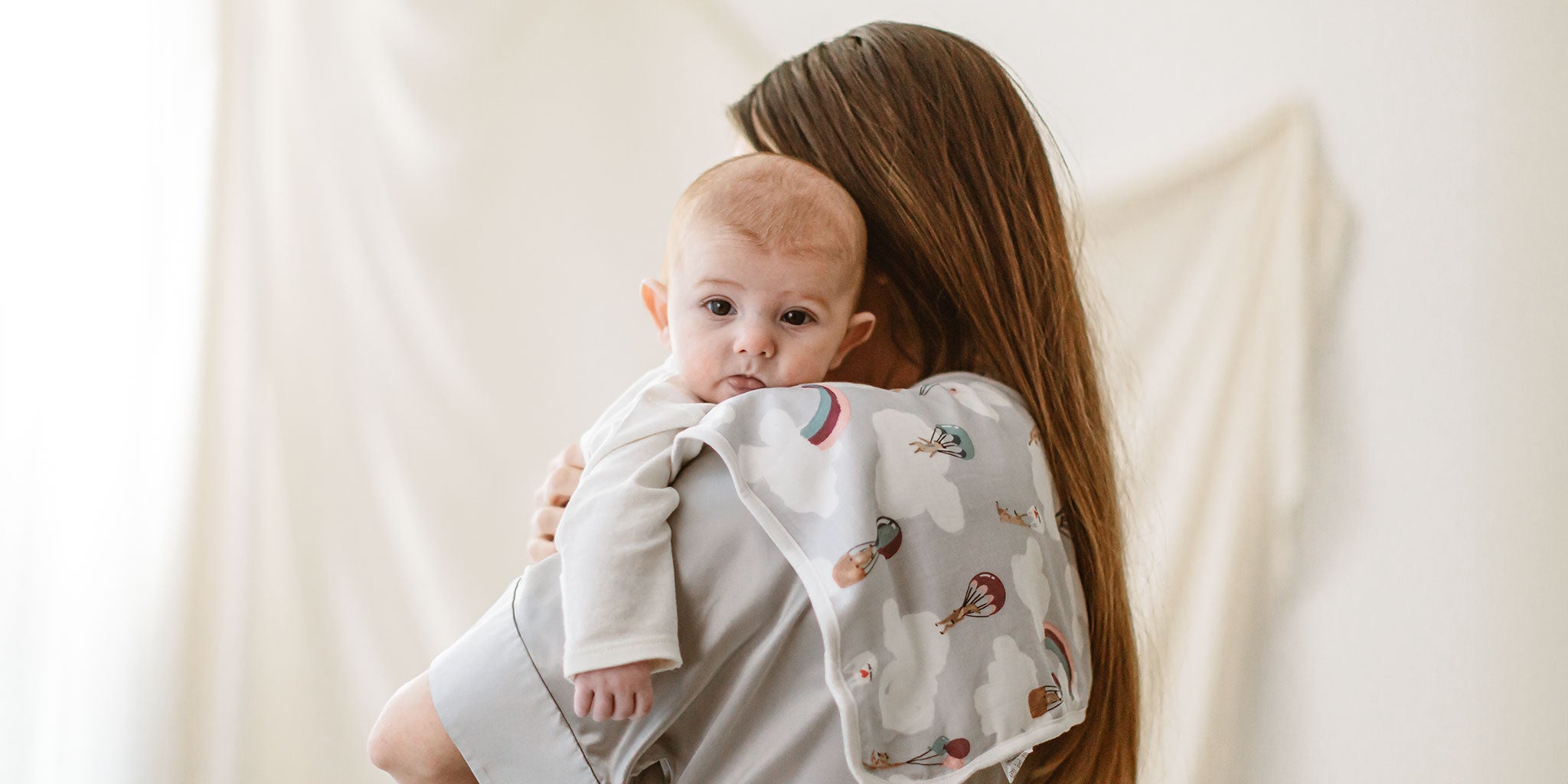
What is the most absorbent baby bib?
Among bib materials, cotton and bamboo are widely considered the most absorbent. Cotton, cotton blend, or bamboo bibs are soft, comfortable, and effective at absorbing drool, spit-up, and other liquids.
If absorbancy is the biggest consideration, look for bibs with multiple layers or a terry cloth backing, as this enhances its absorbent properties.
It's worth noting that drool bibs often feature a combination of cotton and other absorbent materials, providing high moisture absorption.
What is the difference between a bandana bib and a regular bib?
There are a few primary differences between a bandana bib and a regular bib.
Shape and size
Regular bibs have a more rectangular or rounded shape, and they are usually large enough to cover a significant portion of your little bub’s chest and upper body. Bandana bibs have a triangular shape; they are smaller and have a little less coverage for messy babies.
Style
Traditional bibs put function before style; they come in various designs but usually put practicality ahead of style. Bandana bibs have a functional and fashionable design, made to resemble a trendy bandana accessory.
Use
Conventional bibs are best suited for feeding, messy meals, and activities where babies need more coverage. Bandana bibs are more like an accessory for everyday wear and to manage drool and light spills.

Best bibs for newborns
The best bibs for newborns are cuddly soft and made of fabric that’s healthy on their skin. The Nest Designs Burp ‘n Bib is our pick for newborns because of its durability, versatility, and sustainability.
A Burp ‘n Bib is a soft and absorbent burp cloth with snaps, so it transforms into a bib as your little love grows. Whether your baby is drooling, burping, or transitioning to solid foods, this bib is a catch-all.
Best bibs for feeding
Some say that silicone bibs are best for feeding. Though silicone bibs have their place, they don't provide all-over coverage for the messiest eaters. Nest Designs Long Sleeve Bib Cover is a smock bib that keeps them clean down to their wrists; the full coverage front and sleeves make these bibs the best. This design offers superior coverage, ensuring your baby's outfit remains pristine.
The reason smock bibs are best for feeding isn't just about practicality with cleanup; they allow the messy, memory-making moments that happen when your little bubs starts feeding themselves.

Best bibs for drool
Drooly babies need the best bib for the job. Excessive drooling can lead to drool rash, a condition that may spark some discontent with your little one. When babies drool constantly, a bib soaks up their saliva and keeps their skin dry. Though many types of bibs can handle this job, most are made for utility rather than as a practical accessory.
The Nest Designs Bandana Bib is the best bib for drooling babies because it's highly absorbent and cute enough for all-day wear.
How many bibs do you need?
The number of bibs you need can vary depending on how often you do laundry. The more bibs you have, the less often you need to do laundry. If you don’t mind doing laundry more frequently, you need fewer bibs on hand. You should plan to use at least one bib per day.
For newborns, having six to eight bibs ensures you have enough clean bibs on hand to wipe up drool and spit-up. As your baby transitions to high-chair feedings, the frequency and messiness of meals may increase. Having 10 to 12 bibs is practical as it allows for daily changes and has a few extras as a buffer for super messy meals or unexpected spills.
Of course, if you have a silicone bib or one with a waterproof coating, you can wipe them off after every use and wash them less frequently.

When do babies stop wearing bibs?
Babies generally stop wearing bibs when they can eat and drink without much help, usually around the time they turn two. As toddlers develop more control over their motor skills and become better at self-feeding, the need for a bib diminishes.
However, some toddlers may continue to wear bibs for longer, especially during particularly messy meals or creative play activities. Each child is different, and the decision to stop using bibs ultimately depends on what you think is best for your child.
Tips for safely using bibs with your baby
A baby bib may seem like a simple design, but it still has some safety considerations. Here are some tips when shopping for the best bib for your baby:
- Choose safe materials and designs: Look for bibs free from harmful substances and have undergone safety testing.
- Choose the right size: A bib should fit comfortably, neither too tight nor too loose. Adjustable bibs that fasten with snaps, velcro, or other safe closures accommodate your baby as they grow.
- Supervise your little bub during meals: This added safety measure ensures issues during mealtimes are dealt with quickly.
- Take off the bib after feeding: Some bibs are not comfortable or safe for prolonged wear.
- Choose a bib with safe fasteners: Fasteners should be secure but easy to open.
- Replace damaged bibs: Bibs that are loved too long may have loose pieces or frayed edges that can become a risk to your little one.
- Wash the bibs regularly: Keeping baby bibs clean helps prevent bacterial growth and exposure to other harmful substances hiding in old food residue.

Can a baby wear a bib while sleeping?
It is not recommended for babies to wear bibs while sleeping. There are potential risks associated with wearing a bib during sleep, including poor sleep quality, choking, strangulation, and more.
Can a baby wear a bib while in a car seat?
A baby can wear a bib in a car seat but should only do so with proper precautions and supervision. The bib should not pose a strangulation risk or interfere with the fit of the harness. If your baby wears a bib in the car seat, ensure there are eyes on them at all times, and make sure they don't fall asleep in the car seat while wearing a bib.
Always prioritize safety when using a car seat. If you have any concerns or are unsure whether a specific bib is safe to use in the car seat, err on the side of caution.
The best baby bibs for your little love
Selecting the best bib for your baby takes thoughtful consideration. As a parent, you want to choose a safe, comfortable, sustainable bib that keeps your little one clean and dry.
At Nest Designs, we make baby products out of premium, healthy fabrics that are as soft and sustainable as possible. (Read more about our sustainable fabrics.)
You can rest assured that even products as small as our baby bibs are made with what’s best for your little one in mind.


